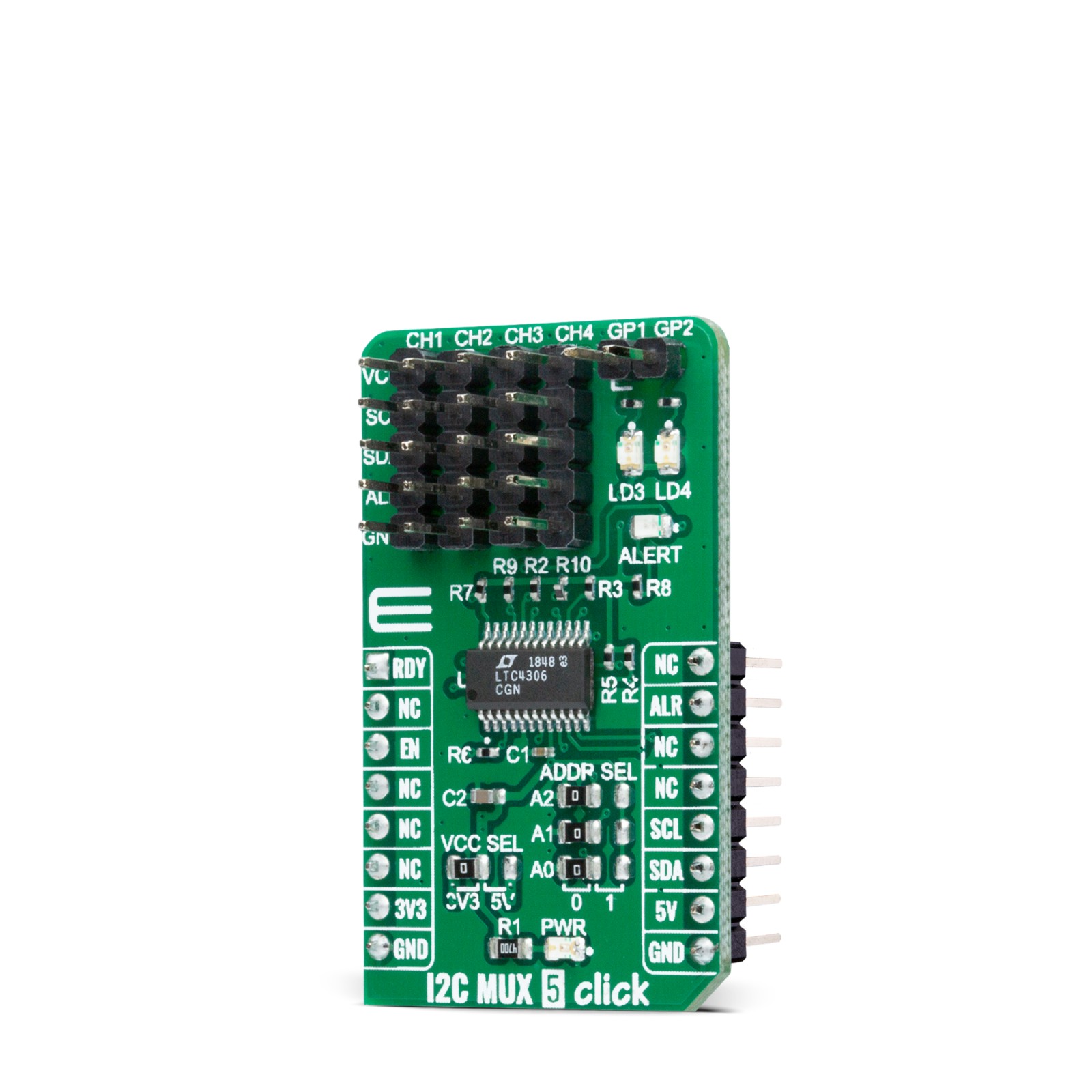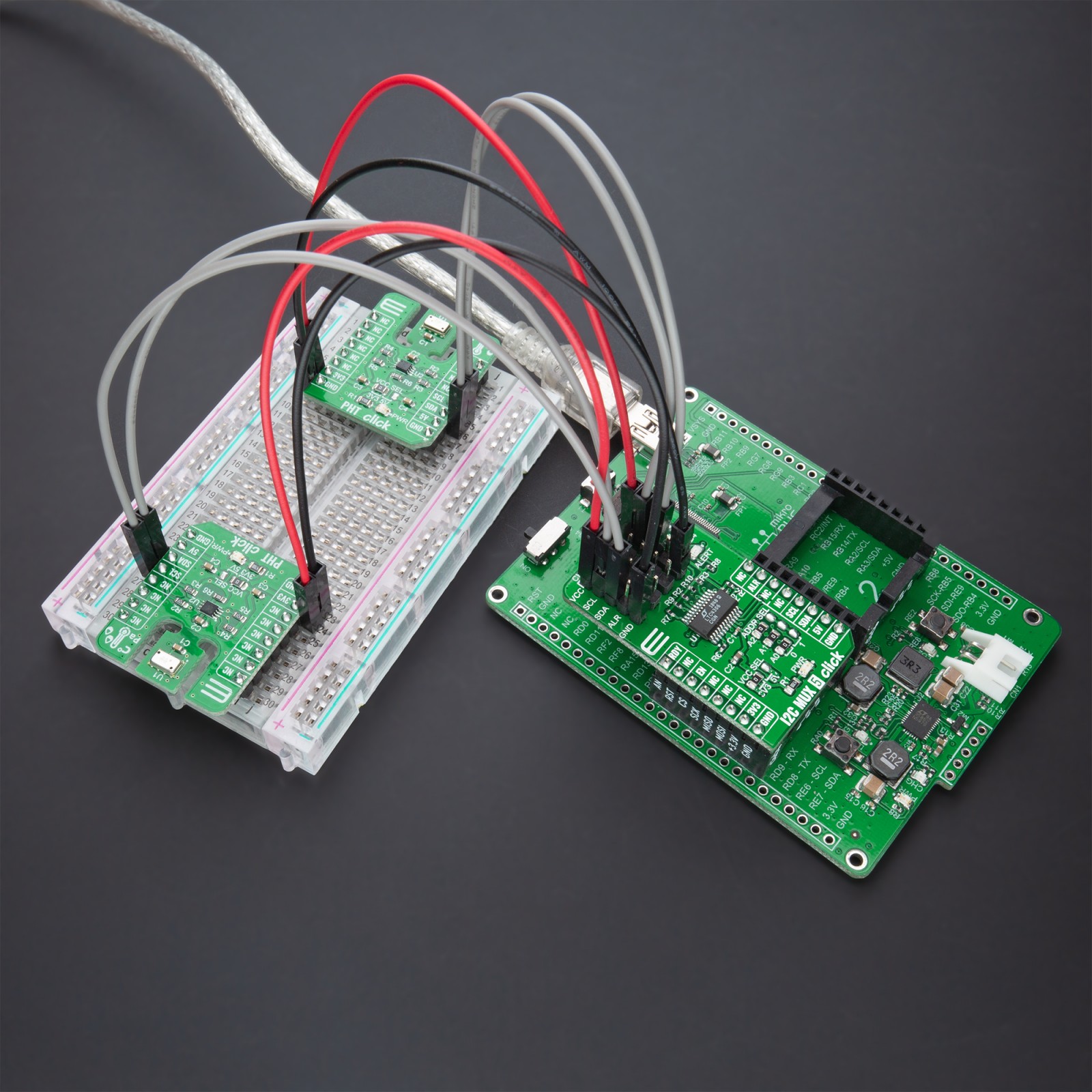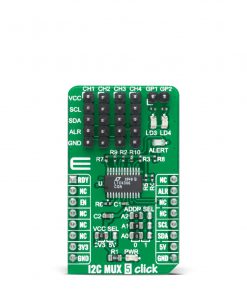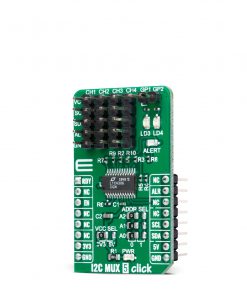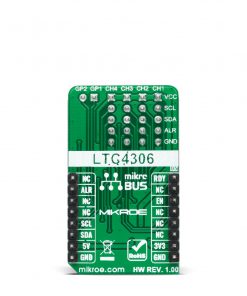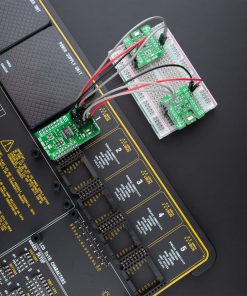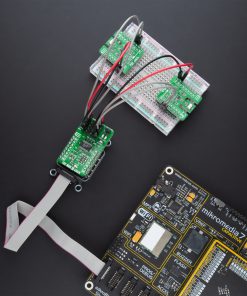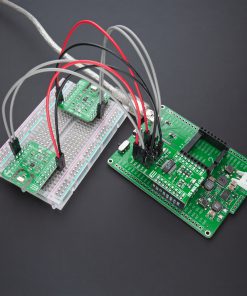Subtotal: R1,050.00
I2C MUX 5 Click
R540.00 ex. VAT
I2C MUX 5 Click is a compact add-on board with translating I2C and SMBus switch intended for applications with I2C slave address conflicts. This board features the LTC4306, a 4-channel, 2-wire bus multiplexer with bus buffers to provide capacitive isolation between the upstream and downstream buses from Analog Devices. Through software control, the LTC4306 splits the I2C bus into four sub-branches and connects the upstream 2-wire bus to any desired combination of downstream buses. It has a programmable disconnect from stuck bus function, provides four alert inputs for fault reporting, and two GPIO pins configurable as inputs, open-drain, or push-pull outputs. This Click board™ is suitable for a wide range of applications from industrial to medical, communications, and automotive systems.
I2C MUX 5 Click is supported by a mikroSDK compliant library, which includes functions that simplify software development. This Click board™ comes as a fully tested product, ready to be used on a system equipped with the mikroBUS™ socket.
Stock: Lead-time applicable.
| 5+ | R513.00 |
| 10+ | R486.00 |
| 15+ | R459.00 |
| 20+ | R441.72 |

 GPS Click
GPS Click 
